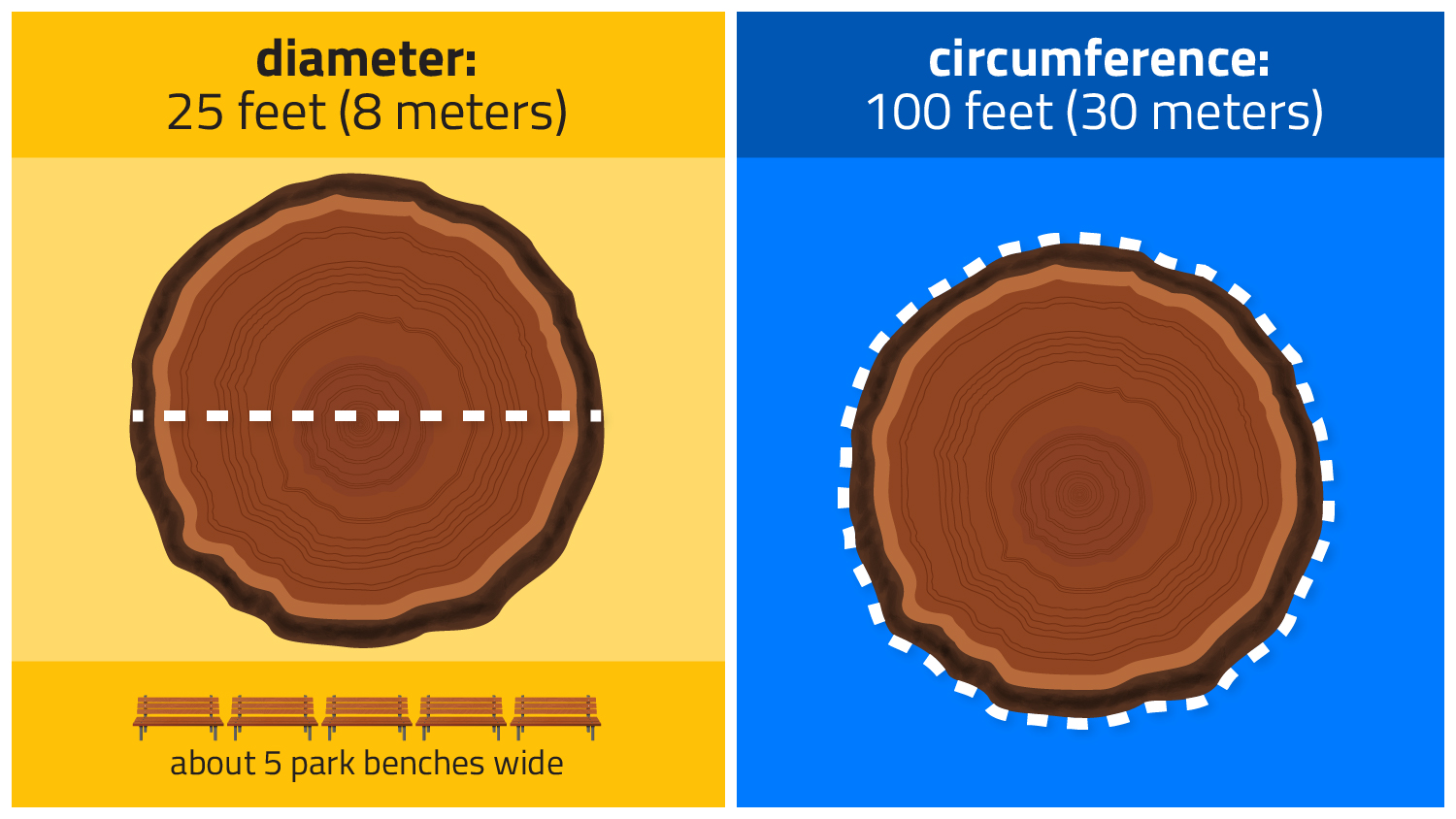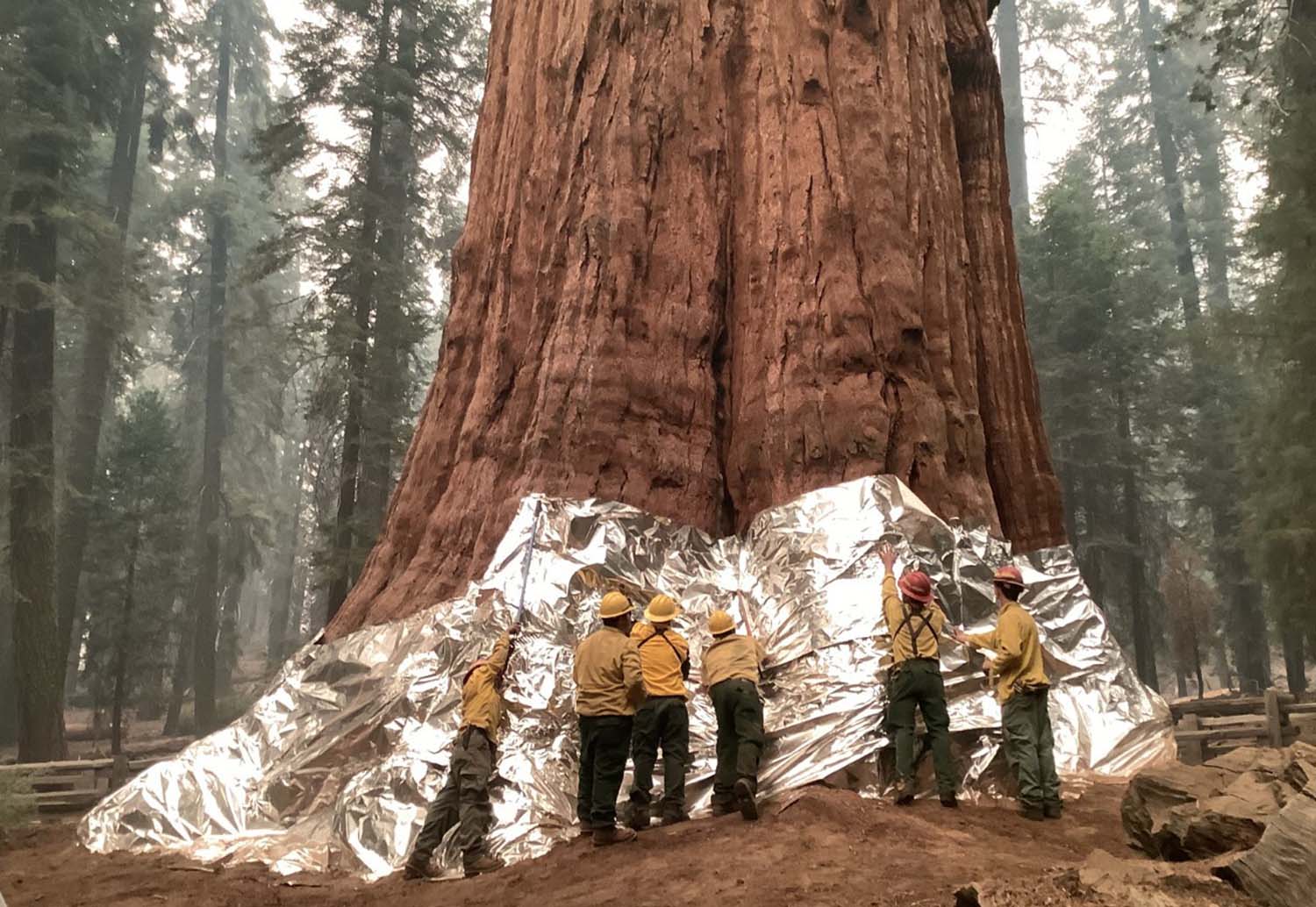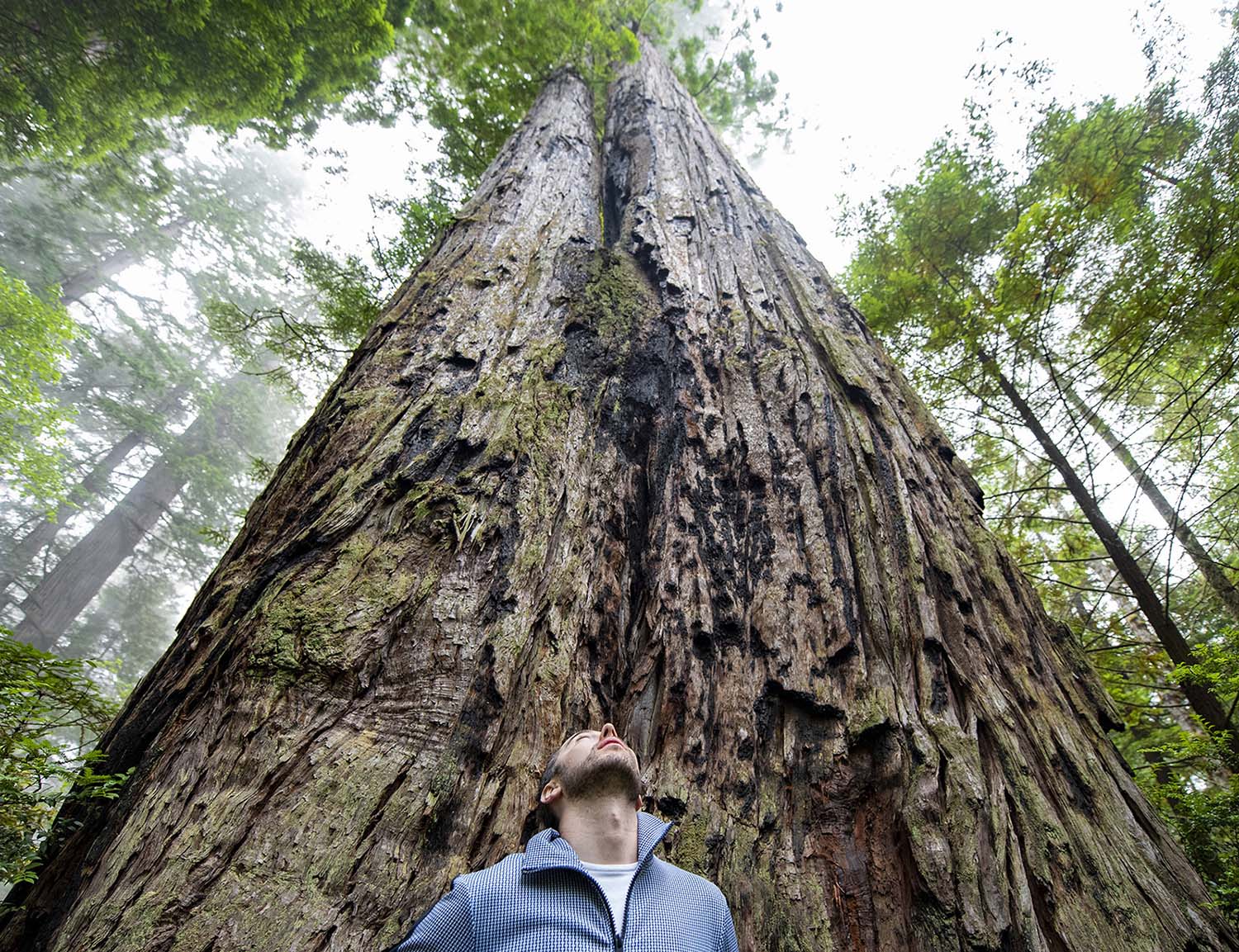City of Giants
Volunteers are planting giant trees in Detroit, Michigan, to help the city and the trees.
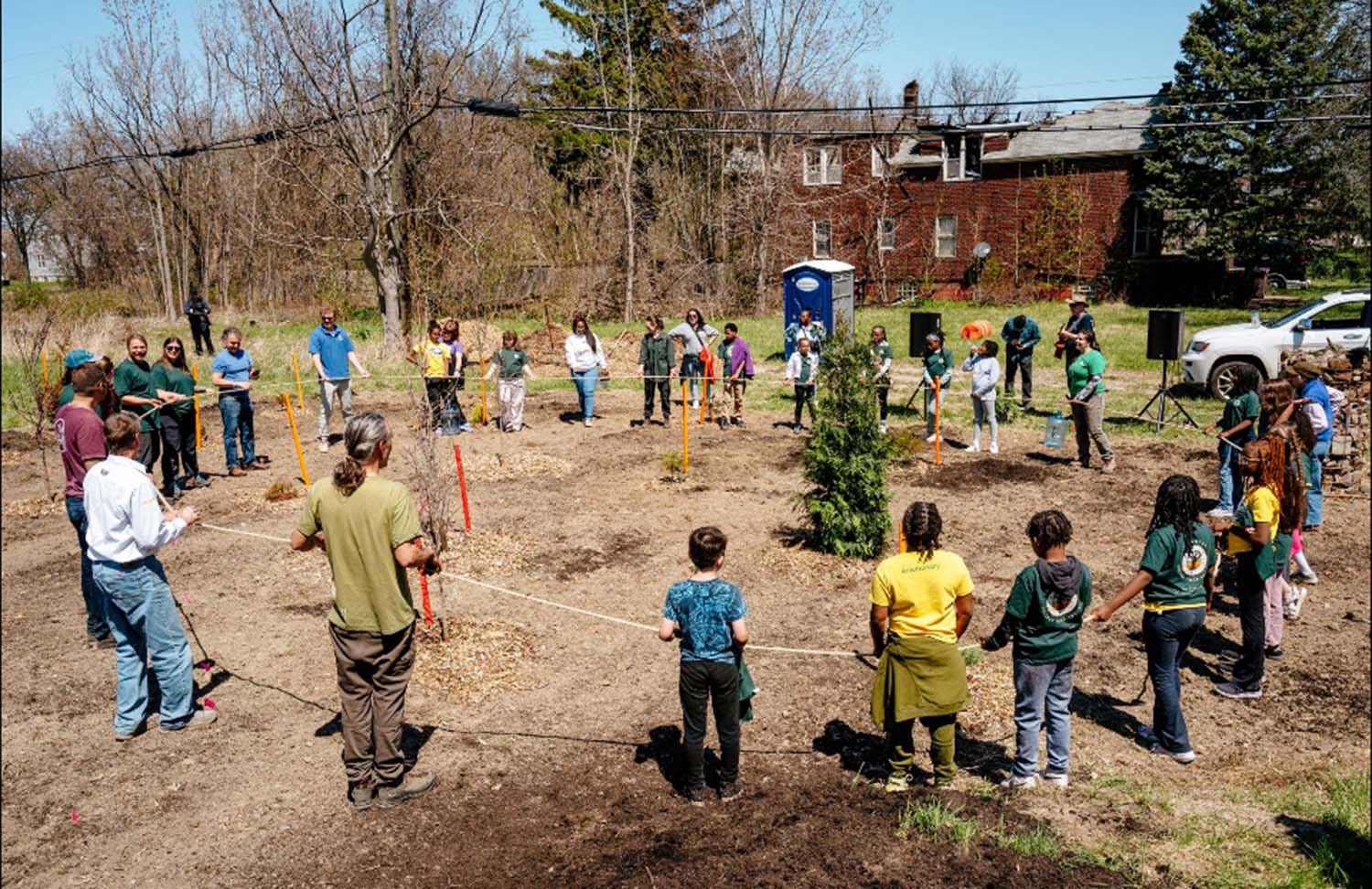
© Courtesy Nick Hagen/Archangel Ancient Tree Archive
Volunteers gather around a giant sequoia sapling, one of 100 that were planted in Detroit on Earth Day, 2025.
When arborists (tree experts) decided to plant trees on some vacant land in Detroit, Michigan, they wanted to go big. So instead of picking maple or oak trees for their project, they chose some of the largest trees on the planet: giant sequoias.
Detroit is the first city chosen for the Giant Sequoia Filter Forest, a tree-planting project aimed at helping cities while also helping preserve the giant sequoia species. Once a much larger city, Detroit lost much of its population when its automobile factories shut down. The city has knocked down many vacant buildings, leaving empty lots with enough space for giant sequoias to grow.
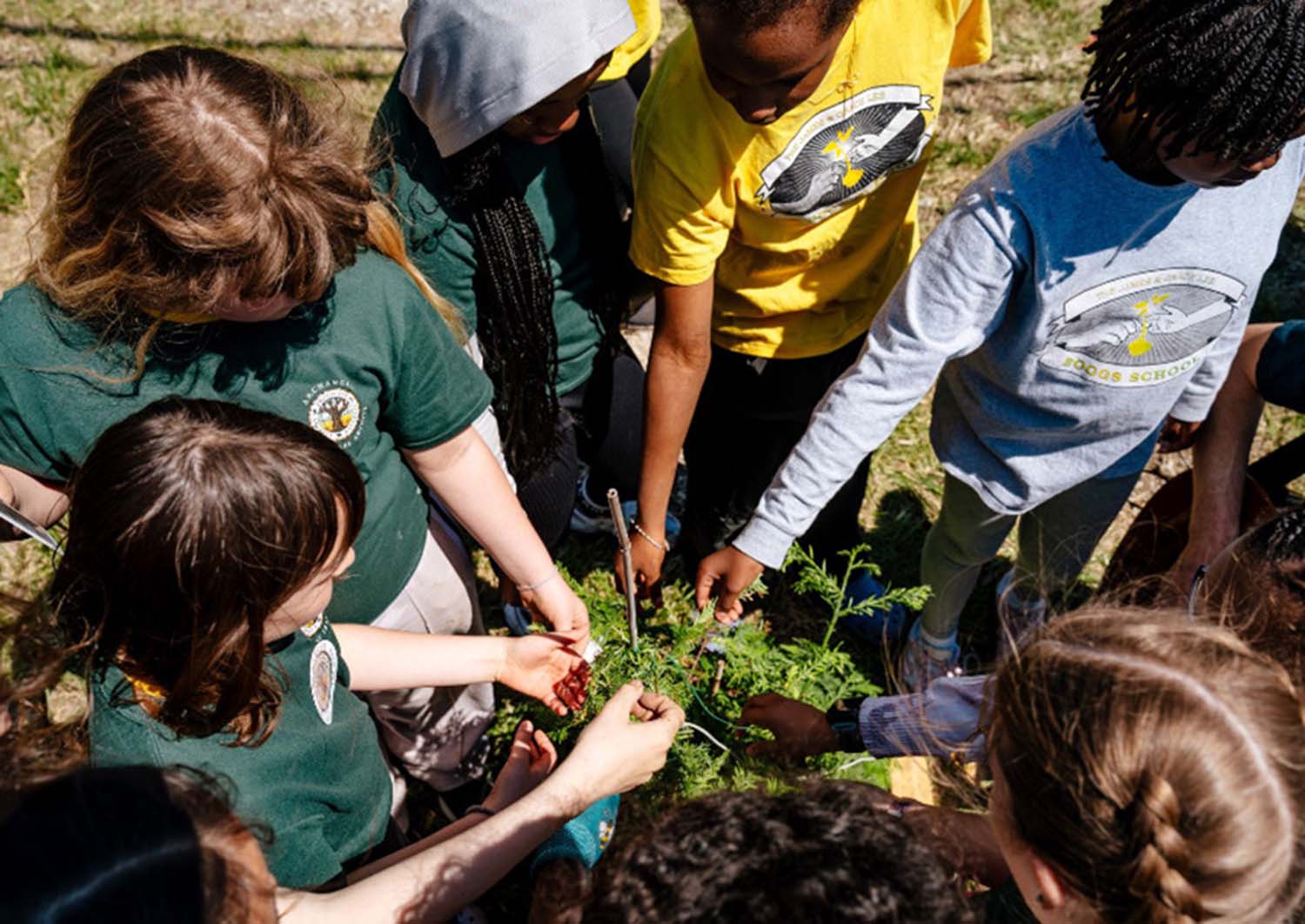
© Courtesy Nick Hagen/Archangel Ancient Tree Archive
Many kids are helping to plant and care for Detroit’s new giant sequoias so the trees grow big and strong.
“There’s not another urban area I know of that has the kind of potential that we do to [add more trees],” Andrew Kemp, executive director of Arboretum Detroit, the organization that is planting the trees, told the Associated Press. “We could all live in shady, fresh air beauty. [There’s] no reason we can’t be the greenest city in the world.”
Arboretum Detroit has planted several sequoias in Detroit in the past 10 years. The ones being planted in 2025 were donated by an organization called Archangel Ancient Tree Archive.
Trees don’t just make cities cooler by providing shade. They also help control floodwater and improve air quality by removing pollution from the air. Giant sequoias, which are evergreens, grow fast. In 10 years, the saplings (baby trees) that are being planted in 2025 will be about 15 feet (4.6 meters) tall. Eventually, they could grow to be hundreds of feet tall. Sequoias are also tough enough to withstand many tree diseases—and they can live for more than 3,000 years.
Arborists are also hoping the project will help save the giant sequoia species. Sequoias are native to California, where climate change is worsening the dry conditions that can lead to forest fires.
“They’re safer here…we don’t have wildfires like [California],” Kemp explained. “The soil stays pretty moist, even in the summer.”
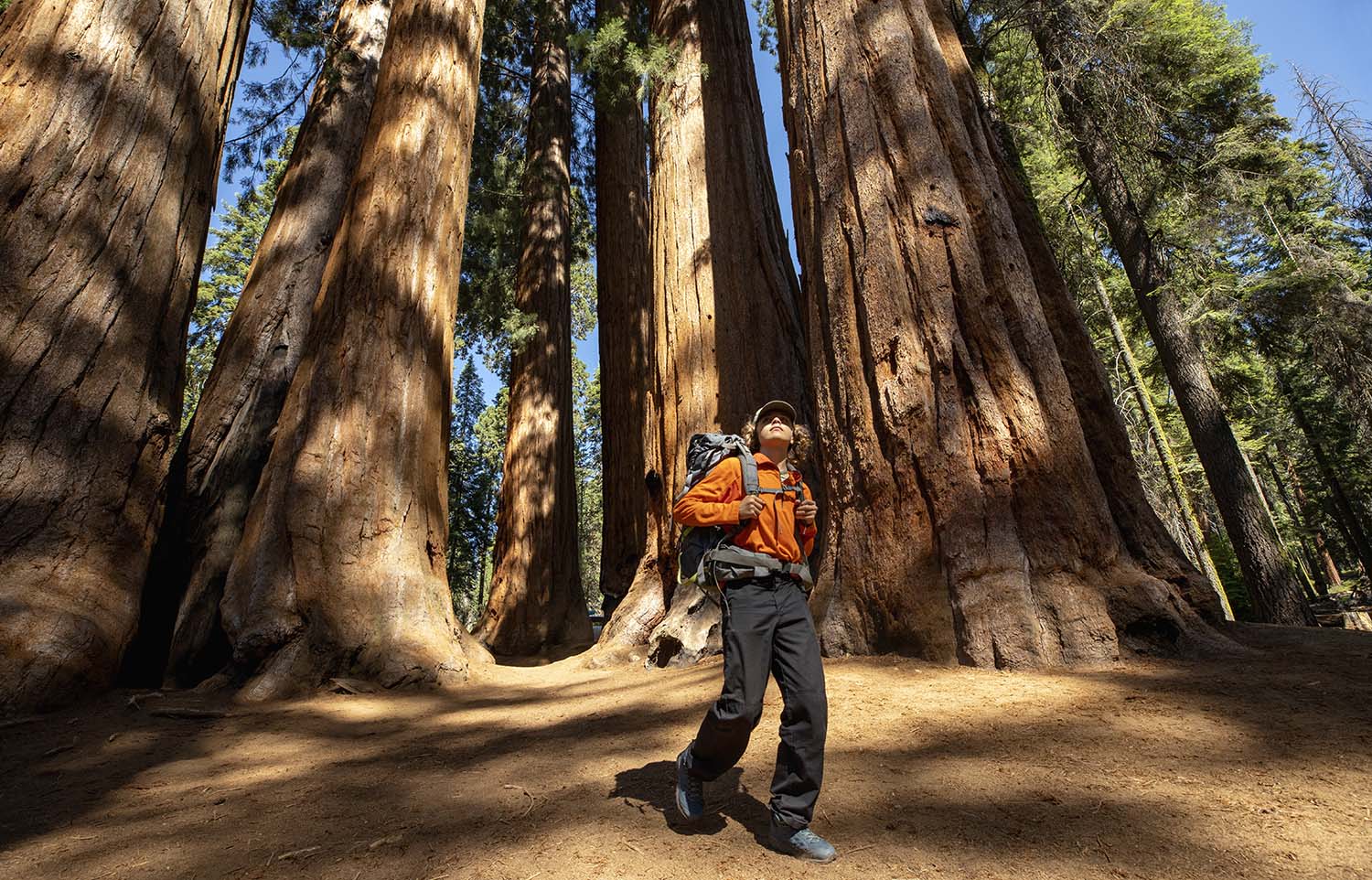
© LL28—E+/Getty Images
A hiker walks through a giant sequoia forest at Sequoia National Park in California.
Like any living thing, the trees of Detroit will need to be cared for—hopefully for generations to come. David Milarch, co-founder of Archangel Ancient Tree Archive, has started a program to teach Detroit kids how to take care of sequoias.
“We empower our kids to teach them how to do this and give them the materials and the way to do this themselves,” Milarch told the Associated Press.
As long as the trees have what they need, they’ll help give the city what it needs—a cleaner, healthier environment.
“Because these trees grow so fast, so large and they’re evergreen, they’ll do amazing work filtering the air here,” Kemp said. “We’re trying to breathe clean air. We’re trying to create shade. We’re trying to soak up the stormwater, and I think sequoias—among all the trees we plant—may be the strongest, best candidates for that.”

